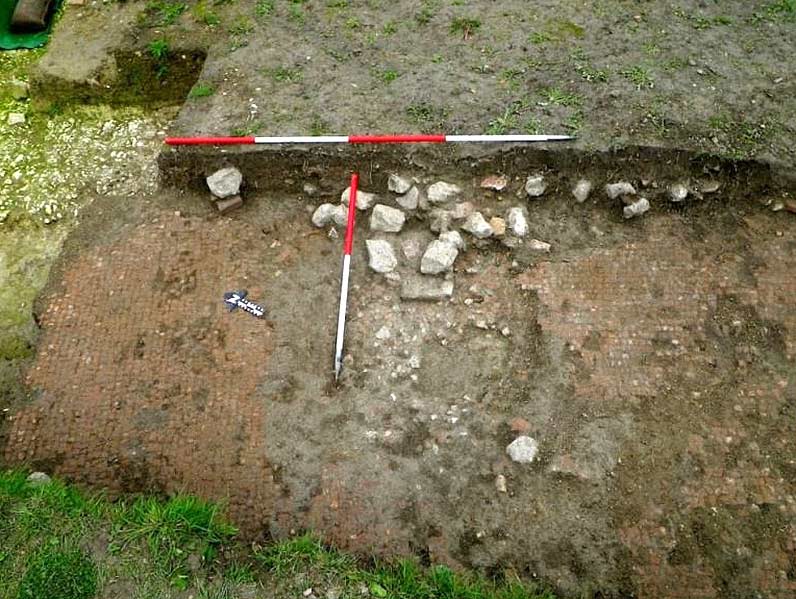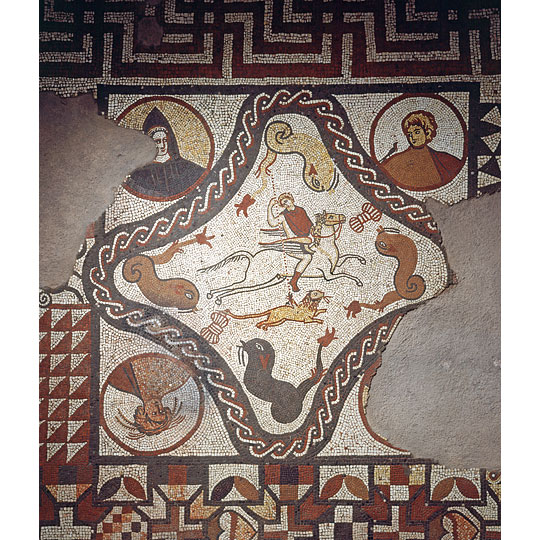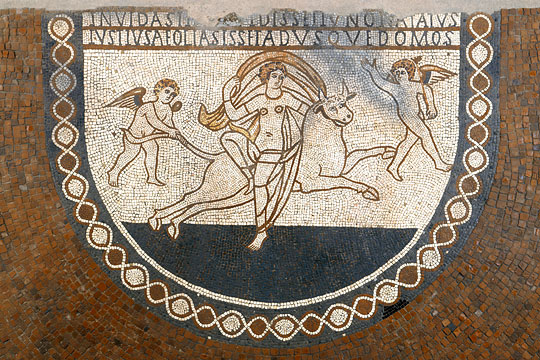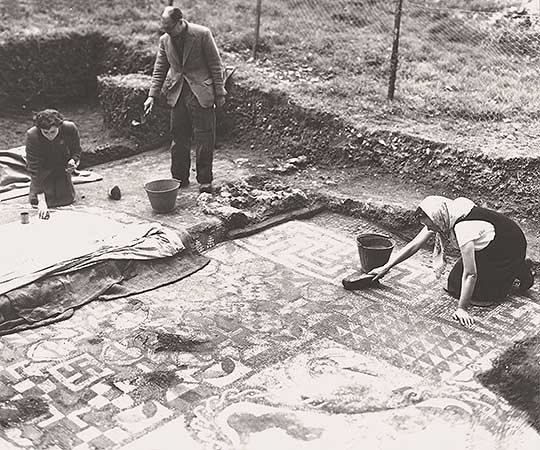What was life as a Mosaicist like?
Mosaicists were highly-skilled workers who often had to create very complicated and intricate patterns. Many of the geometric designs and figures such as animals were copied from other artworks or pattern books. Sometimes mosaicists were even working from memory. Mosaicists worked for wealthy people who could afford expensive decoration in their homes.
Some mosaicists came from other places in the Roman Empire to work in Britain. Eventually, some mosaicists organised themselves into local 'schools' and workshops which specialised in particular designs which they used in their local areas. As the demand for mosaics increased at the end of the 2nd century, foreign craftsmen and local apprentices might even have worked together.
Mosaics in the Darent Valley
Click on the pictures below to find out more about mosaics found in the Darent Valley.
Activity Idea
ART AND DESIGN
Take on the role of a mosaicist and design and make your own mosaics. You could take inspiration from the mosaics at Lullingstone Roman Villa, a Roman myth, or maybe a story or place you know well.
You can use our mosaic template and video to help you.
Download the template (64.2 KB)



